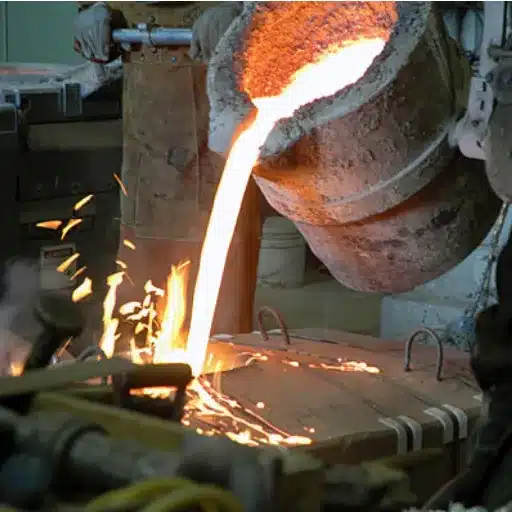Selecting a boiler also means making a choice about its heat exchanger, a very important part of the boiler. The performance, efficiency, and lifespan of your entire boiler system depend on the materials used for the heat exchanger. Most widely used options include stainless steel and aluminum; both of these options come with pros and cons. But which one is truly the better choice for your needs? In this article, we will compare both materials to assess their performance in durability, cost, heat transfer, and maintenance. By the end, you’ll know which material best suits your requirements and expectations.
What are the key differences between stainless steel and aluminum heat exchangers?
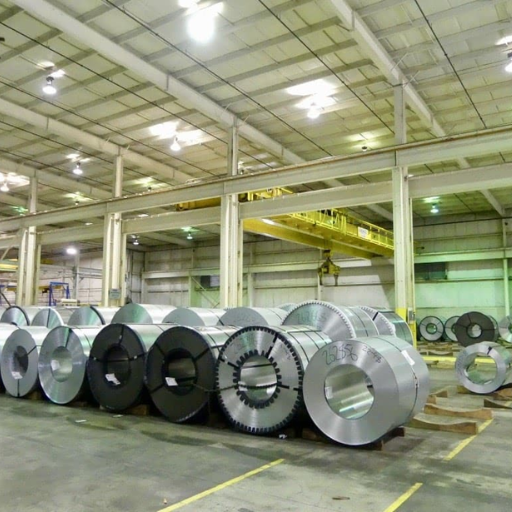
- Durability: Stainless steel has greater resistance to wear and corrosion, which makes it last longer in rough conditions in comparison to aluminum. Although aluminum has a lesser weight, It is also more susceptible to corrosion and usually needs to be painted with protective coatings.
- Cost: Among the two, Aluminum is the most cost effective because of lower initial costs, while steel is more expensive because of its high durability and corrosion resistance.
- Heat Transfer: Rapid heat transfer is a forte of aluminum due to its efficiency in conducting heat; on the other hand, stainless steel retains heat for a longer duration, even though it conducts heat at a slower rate.
- Maintenance: Aluminum exchangers are less efficient over a long period of time, thus needing additional upkeep because of their proclivity to corrosion. In comparison to Aluminum, stronger materials like glaring steel require less care and maintenance during use.
Your choice of either of the two materials will depend on how extensive your budget is, alongside the conditions of the environment in which it will function, and the overall performance goals set.
How do stainless steel and aluminum compare in thermal conductivity?
Thermal conductivity measures how a particular material conducts thermal energy. The difference between stainless steel and aluminum is marked. Aluminum, for instance, is an excellent conductor of thermal energy because its thermal conductivity is very high, usually ranging between 205-250 W/m·K (watts per meter kelvins). As such, it is heavily applied in fields that require fast and effective transfer of heat, like in heat exchangers, cooking pans, and cooling units.
Stainless steel, on the other hand, is much less conductive thermally and has a range of 15-25 W/m·K depending on the alloy. Compared to aluminum, stainless steel is not as efficient in conducting heat, but this property can be useful in situations where controlled heat retention is preferred. Cookware or industrial systems made of stainless steel take advantage of its thermal stability or its ability to evenly maintain temperatures for long periods.
Aluminum is much more useful for work that requires fast precision during, and, rapid cooling afterward. The opposite is true for stainless steel which performs greatly in long lasting applications requiring tempered resistance to heat damage.
What material offers better corrosion resistance in heat exchangers?
When choosing a material for heat exchangers, resistance to corrosion is important, particularly in cases where humidity, chemicals or temperature changes are present. In heat exchangers, stainless steel and titanium, which are some of the commonly used materials, have distinctive advantages in terms of corrosion resistance.
Stainless steel of type 316 and duplex stainless steel grade possess formidable resistance to corrosion, chloride pitting and crevice corrosion. Due to stainless steels’ chromium content, it has passive oxide film which protects the material from rust and deterioration in moderately aggressive environment. However, stainless steel does have shortcomings in naturally occurring saline or acidic enviroments over prolong use.
As for titanium, it shows remarkable resistance to corrosion even in the presence of chemicals and extreme thermal conditions. Titanium’s passive oxide coating protects it from harsh environments such as seawater or processes with strong acids. Research indicates that titanium withstands structural challenges over an extended time when compared to other metals subjected to such conditions. For example, titanium performs better than other metals in marine applications and desalination plants, making titanium ideal for highly corrosive environments.
Furthermore, the evolution of material technologies has enhanced the corrosion resistance of stainless steel and titanium alloys, giving engineers greater freedom of choice depending on the operating parameters of their heat exchangers. With the need for economical use of materials, the decision between these materials is usually a compromise of strength and maintenance versus cost.
How do the weight and structure differ between these heat exchanger materials?
The exploitation of titanium alloys in heat exchangers applications teh their superiority over other metals is scrutinized. The titanium alloy parts, in comparison with those made of stainless steel, are of a much lighter weight. This is because the density of titanium alloys is approximately 4.5 g/cm³, while that of stainless steel is about 7.8 g/cm³. Thus, titanium alloys are far more beneficial than stainless steel in industries where weight reduction is necessary, like the aerospace industry or portable systems.
Titanium alloys are lightweight and structurally strong materials. Given the advanced systems engineering, titanium alloys can withstand high levels of stress while maintaining a lighter overall build. Conversely, stainless steel is noted for its impressive rigidity and durability, along with higher weight. This makes it highly noted for withstanding harder conditions where high pressure is involved, resisting deformation. Moreover, stainless steel comprises crystallographic frameworks such as the austenitic or ferritic phases, which influence its mechanical properties, thermal expansion, and attributes of behavior.
The progression on advancements on extra lightweight materials along with the sturctural properties distinguishes how these features matter and aid for selection.
Which heat exchanger material provides better efficiency for my HVAC system?
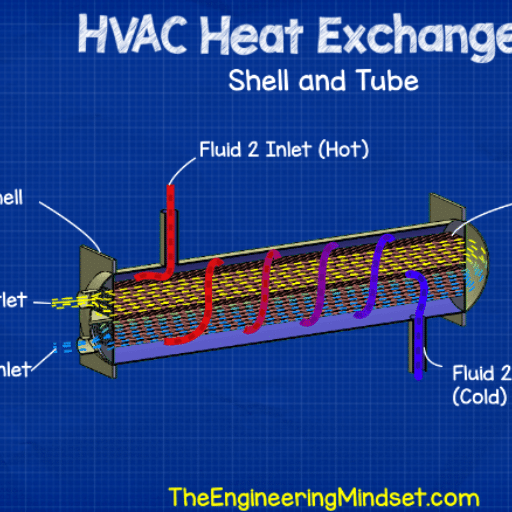
Choosing the best heat exchanger material for your HVAC system, considering efficiency, depends on your unique needs and circumstances. As a rule:
- Copper is very efficient for systems that emphasize swift heat transfer because of its excellent thermal conductivity.
- Aluminum, on the other hand, is good for systems with weight or space limitations. Wa lightweight and cheaper, it also has reasonable thermal performance.
-
Stainless Steel is better suited for environments with high moisture or fluctuating temperatures as it’s more durable and resistant to corrosion.
Assess the operating surroundings, budget, and efficiency objectives of your system to establish what material will best accomplish the goals set.
Does a stainless steel heat exchanger offer higher efficiency than aluminum?
The effectiveness of a stainless steel heat exchanger as opposed to an aluminum one largely depends on the use case and operational settings of the device. In comparison to aluminum, stainless steel is much worse a conductor of heat, having a thermal conductivity of approximately 237 W/m·K, copper is however much better at 16 W/m·K. This signifies that when dealing with systems where thermal conductivity supersedes other considerations, aluminum would perform much better.
On the other hand, stainless steel offers quite a number of benefits in durability and its ability to resist corrosion. Stainless steel also performs better in conditions where moisture is constantly present, temperatures vary frequently, or there is continuous exposure to highly corrosive materials. This means that for long term use, stainless steel heat exchangers would be more viable because they do not have the high degradation or replacement rates of other materials which aids in maintaining efficiency over longer periods of time.
The requirement of the application will therefore dictate which choice of material to go for. In cases where rapid heat transfer is essential and weight considerations come into play, aluminum is the choice. For harsh conditions and applications where durability, integrity, and longevity are involved, stainless steel is a more suitable option.
How do different materials affect heat transfer in condensing boilers?
The type of material utilized in condensing boilers is very important as it impacts the efficiency and effectiveness of heat transfer. For instance, aluminum is a good example of a heat conductor with an outstanding thermal conductivity of approximately 237 W/m·K. This indicates that aluminum heat exchangers are able to transfer heat. As a result, these parts can be used in systems that need a quick response to thermal changes. Nonetheless, the corroded aluminum’s containment susceptibility due to acidic conditions, like what is created during condensation, can cause issues with long-term failure without proper maintenance.
In contrast, stainless steel is less efficient as an aluminum heat conductor; its thermal conductivity is around 16 W/m·K. Despite this, stainless steel condensing boilers excel in demanding environments that require durability and unwavering performance because it is resistant to corrosion, high temperatures, and acidic conditions for long periods. Other forms of stainless steel also retain reliability and efficiency due to advancements in design, such as changes to surface areas like increased surface areas that enhance the performance in heat transfer in spite of stainless steel’s lower conductivity fundamentals.
In the end, the material choice impacts the system’s performance and its lifespan, and maintenance needs. A good condensing boiler system integrates thermal efficiency with material longevity and system design to meet operational requirements.
How does longevity compare between stainless steel heat exchangers and aluminum ones?
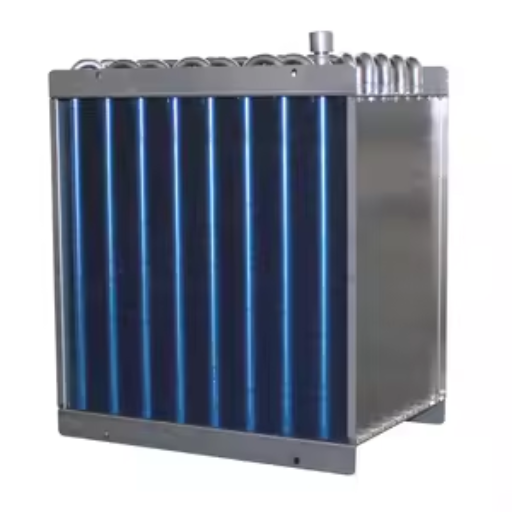
Generally, heat exchangers made of stainless steel tend to outlast their aluminum counterparts. This is because stainless steel is better at withstanding damage from rust, a problem that often arises in heat exchangers, particularly in systems with acidic condensate. Although aluminum is easier to handle due to its light weight, and transfers heat efficiently, it is also prone to corrosion over time which can greatly reduce its lifespan. In these cases, sturdiness and low maintenance is the goal; therefore, stainless steel becomes the better alternative.
What is the typical lifespan of stainless steel vs aluminum heat exchangers?
Very few stainless steel heat exchangers have a lifespan of below 15 years, while the average duration for a fully functional piece is over 20 years. Its remarkable resistance to corrosion significantly determines its longevity, especially in systems with excessively high temperatures, acidic mediums, or even salt-laden air. In comparison, aluminum heat exchangers last roughly 10 to 15 years in the same conditions. Being an excellent thermal conductor helps aluminum, but its remarkable corrosion behavior, especially in moist and aggressive environments, marks limits on its durability. Routine cleaning, avoidance of harsh chemicals, and other proper maintenance techniques can extend the warranty period for an aluminum device, but in most cases, pure steel continues to outperform.
How does resistance to corrosion affect heat exchanger durability?
The heat exchanger’s operational efficiency, maintenance expenses, and overall lifespan are directly influenced by its durability, which is linked to its resistance to corrosion. Cut edge on repair or replace corrosion resistant materials like titanium and stainless steel are far less likely to suffer from degradation with corrosive agents such as saltwater, acidic fluids, and industrial chemicals. Mild steel’s chemical stability allows it to be used for the fabrication of heat exchangers, which on average last over 20 years in standard industrial settings.
On the other hand, aluminum has low density and is cheaper, but could be more rapidly eroded in areas with high moisture or chlorine concentration. Degradation of these materials due to corrosion can have catastrophic consequences, such as cavity formation, which results in leakage and thermal inefficiency.
New data shows that stainless steel, as compared to aluminum, has a much lower corrosion rate, 0.002 to 0.05 mm/year, as opposed to aluminum, which under the same conditions can be over five times greater than that of stainless steel, losing material at an accelerated pace. Compared to traditional industry applications, ST austenitic compounds would initially have a higher cost but greatly reduce the lifetime reliability over time, proving the value of stainless steel. To minimize maintenance and ensure durable performance, heating exchange should be ultrasonically treated emphasized titanium or steel of superior corrosion resistance.
Are inhibitors necessary for different heat exchanger materials?
The type of inhibitor used in heat exchangers is highly reliant on the materials employed and the operating conditions of the system. Take, for instance, carbon steel. It is often used in heat exchangers because it is cheap, but it corrodes very easily in high-grade environments. Usually, phosphate or molybdate-based compounds are used to inhibit corrosion on the carbon steel surfaces to prolong the lifespan of the steel and decrease the amount of upkeep needed.
Looking at stainless steel, its resistance to corrosion provides less need for inhibitors in most conditions, although very aggressive conditions like those involving chlorides or acidic media would require some form of specialized inhibitor to control pitting or crevice corrosion. Data suggests that even a very small concentration of nitrite-based inhibitors can significantly increase the lifespan of stainless steel under these conditions.
The non-stick form of titanium does not need inhibitors due to its natural sterile satin coat, but in industrial cases like high-temperature seawater, some form of protection could be employed to ensure the system runs efficiently for a long duration. By tailoring the protection system to the components and environment in which they operate, it becomes possible to optimize their performance and minimize the risk of unexpected mechanical failure in crucial parts.
What are the cost implications of choosing stainless steel vs aluminum heat exchangers?
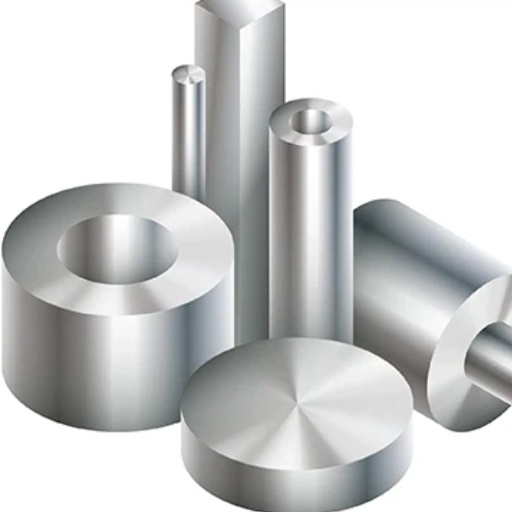
Making a decision between stainless steel and aluminum heat exchangers comes with notable cost considerations:
- Aluminum, due to its low material and fabrication costs, tends to have a lower initial cost than stainless steel heat exchangers.
- Stainless steel heat exchangers tend to endure corrosion more efficiently, thus having greater longevity and durability. This can lead to reduced maintenance and replacement expenses in the long term.
- A stainless steel heat exchanger can operate at much higher extreme temperatures, as well as in highly corrosive conditions. This greatly reduces the chances of system failures, which would be more prevalent in aluminum systems, leading to higher operating costs.
- Although Stainless steel offers more demanding applications, aluminum tends to be more cost-effective initially..
As severe applications are demanding, stainless steel is more suited in the end due to greater value resulting from longevity.
Is a stainless steel heat exchanger a better value in the long term?
To ascertain whether the heat exchangers made of stainless steel will be financially worthwhile in the future, it is vital to evaluate their resilience, upkeep expenditures, performance in harsh environments, and general lifecycle costs.
- Durability and Corrosion Resistance
Stainless steel heat exchangers have a superior level of corrosion resistance compared to aluminum due to the former’s ability to withstand degradation in saltwater, acidic, and high-humidity environments. While both heat exchangers serve similar purposes, the operational lifespan of aluminum heat exchangers is much lower due to their tendency to become damaged over time.
- Thermal Conductivity
Chesterton believes aluminum has the upper hand in thermal conductivity due to the lightness of the material. But, in real world applications, that difference may not guarantee better performance. Remarkable strength of stainless steel allows the material to have thinner walls in some designs, which could further enhance conductivity and heat transfer efficiency.
- Maintenance and Repairs
It has been observed that stainless steel requires less frequent maintenance than aluminum. Also, the latter could face obstacles with corrosion-related issues which would require expensive repairs. Servicing stainless steel heat exchangers is much simpler due to the lack of mechanical damage like dents or cracks. This reduces the cost associated with maintenance.
- Lifecycle Costs and Long-Term Savings
Stainless steel’s long-lasting durability and resistance to wear results in fewer replacements and lower long-term operating costs. For instance, research shows that stainless steel heat exchangers can remain efficient for 15 to 20 years, compared to aluminum units which require replacement every 5 to 10 years, given similar conditions. The increased durability from stainless steel can justify the expense during the lifespan of a system.
- Applications in Extreme Environments
Chemical processing, marine engineering, and heavy manufacturing industries often require extreme condition equipment that can perform reliably. Stainless steel’s property of maintaining its structure makes it ideal for these applications, and ensures demanding scenarios are met without posing significant downtime and expenses from failures.
What are the initial cost differences between aluminum and stainless steel heat exchangers?
When evaluating the costs associated with acquiring a heat exchanger, such as its operational cost, stainless steel counterparts are significantly costlier. More often than not, aluminum heat exchangers are between 20% and 50% cheaper, explaining why they are more common at a lower budget. As an example, an aluminum heat exchanger used in basic industry applications might run between $500. It can get as high as $2000, depending on size and capacity. This compares to a stainless steel counterpart, which is between $1,000 to $3,500 or even vastly higher.
The price difference is always attributed to the materials used. Cheaper materials result in lower price. Aluminum is lighter and cheaper to manufacture than steel. These factors alone greatly swing the costs in favor of aluminum. On the other side, while priced higher, stainless steel excels in longevity, corrosion resistance, and withstands harsh environments, making it ideal for robust applications in strong performance industries. As mentioned before, businesses have to do a thorough check for operational requirements to figure out costs and decide ultimately on savings.
What are the maintenance and replacement costs for different heat exchanger materials?
The heat exchanger’s maintenance and replacement cost greatly depend on the type of material used, operating conditions, and the specific application in which the exchanger is used.
- Stainless Steel
Stainless steel is known for being durable, coupled with low maintenance needs. Its maintenance costs are kept lower as it is resistant to corrosion and can withstand high temperatures. Replacement is usually required every 15-20 years, depending on the working conditions. Its initial cost for some industrial-scale units ranges from
- Copper
Copper heat exchangers are often made of copper due to its superb thermal conductivity. Copper heat exchangers may need frequent maintenance due to corrosion, especially in chloride-rich water surroundings. These conditions can easily add to the already high annual maintenance cost, which falls between
- Titanium
Titanium is a top-grade material for heat exchangers, especially in the case of industries that come into contact with harsh chemicals or seawater. Its corrosion resistance is titanium for harsh chemicals, while significantly reducing maintenance needs. However, the installation cost is always set at a high baseline price of 20,000−50,000 USD or more, depending on size and application. Yet, one expense that has to be incurred is the alloy’s astounding durability that surpasses 25 years, which lowers lifetime replacement costs.
- Carbon Steel
For the majority of applications of heat exchangers, carbon steel serves as a more affordable option. However, regularly scheduled maintenance is required to prevent corrosion from hamper progress in a moist and chemically reactive surrounding. The maintenance cost is moderate, averaging around 300−800 USD every year, while replacements range from every 8-12 years. Regarding replacement, the cost fluctuates from 5,000−12,000 USD.
- Aluminum
When compared to the rest, aluminum heat exchangers are lightweight and more economical while excelling at heat transfer. On the contrary, their tendency for damage in highly acidic or alkaline conditions raises maintenance needs. Maintenance cost is set at 400−700 annually, while replacements cost between 7,000−18,000 USD, and can withstand the test of time for 10 – 15 years.
Selecting the appropriate material entails a detailed evaluation of the particular operational environmental conditions, maintenance requirements, and overall costs associated over time. Spending more on the right materials for a heat exchanger could result in savings when considering the device’s life cycle cost.
Which heat exchanger material is best for specific applications?
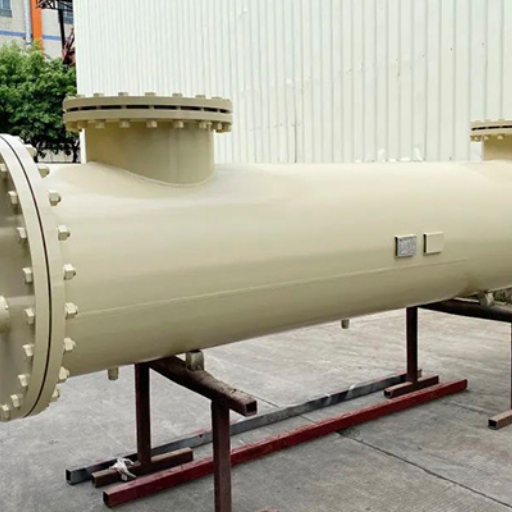
- Stainless Steel
Stainless Steel is Ideal for abrasive industry uses such as food processing and pharmaceuticals due to its durability and resistance to corrosion.
- Titanium
Titanium is Best for highly corrosive marine environments or processes involving saltwater and strong chemicals.
- Copper
Best suited for HVAC systems and other residential heating applications for its thermal conductivity.
- Carbon Steel
Used mainly in the oil and gas industries, carbonate steel is best suited for environments with low corrosive activities where cost is a main concern.
- Nickel Alloys
Used for chemical processing or power generation, these processes require aggressive chemical conditions as well as enduring extreme temperatures.
Every material needs to be carefully picked according to the set criteria for the application while balancing cost with durability and environmental factors.
When is a stainless steel heat exchanger the better choice for boilers?
Stainless steel heat exchangers are a great choice for boilers in applications where their durability and anti-corrosion properties are important. They are especially useful in humid, acidic condensate, and thermally cyclic environments because stainless steel is less susceptible to corrosion and scaling than copper and carbon steel.
Those advantages are also valid for heat exchangers; condensing boilers equipped with stainless steel heat exchangers have unmatched heat transfer efficiency. These boilers have lower exhaust temperatures that may go below the dew point, resulting in condensation formation. The acidic condensate formed during this process greatly reduced stainless steel’s lifespan, increasing maintenance costs. Stainless steel’s resistance against acidic condensate during this process ensures longer service life. As an example, stainless steel in high-efficiency condensing boilers aids and sustains up to 30% more fuel efficiency compared to non-condensing systems.
Stainless steel also maintains its structure when subjected to intense heat and pressure, which is another advantage. Commercial or industrial boiler systems may face extreme operating conditions, and stainless steel’s strength over time makes it an excellent choice for consistent long-term performance. Stainless steel is also a robust, environmentally friendly option because of its recyclability, which often coincides with sustainability goals and policies in many industries.
Despite the higher initial investment tied to stainless steel heat exchangers, their long-term dependability, lower upkeep expenses, and better operational effectiveness usually surpass the initial cost, making them more beneficial for a wide range of boiler applications.
Which material works best for tankless water heater heat exchangers?
When looking into the best options for tankless water heater heat exchangers, stainless steel and copper are the two options most looked at. These two materials have particular benefits based on their uses and needs.
Stainless Steel
Stainless steel heat exchangers stand out for their durability and resistance to corrosion. This makes them particularly suitable for regions with tough or chlorinated water, where minerals can rapidly wear down less resistant materials. Stainless steel also endures high temperatures and pressure over time, sustaining plenty of efficiency during rigorous applications. Moreover, because of its strength, stainless steel exchangers tend to need more maintenance, lowering operational expenses in the long run. Newer stainless steel alloys with modern stainless steel technology form 炭素鋼 (carbon steel) together with copper, which enhances heat transfer efficiency, and shrinks the operational gap between stainless steel and copper.
As an eco-friendly option for eco-friendly industries, stainless steel is also highly recyclable, which reduces the impact on the environment. Although an initial investment in stainless steel heat exchangers is high, the long life span, along with replacement and repair expenses, will save plenty over time.
Copper
On the contrary, copper is well-known for its superior thermal conductivity. The speed at which water is heated in copper heat exchangers is faster, requiring less energy. Because of this, copper exchangers are often utilized in situations where energy efficiency and quick heating are primary concerns. However, in comparison to other metals, copper is more prone to corrosion, especially in water with high amounts of minerals or acidity. This can result in leaks over time, which is difficult to maintain. Copper is less expensive than stainless steel at first, but costs for repairs and replacements can add up if the water conditions are harsh.
Key Considerations and Data
- Thermal Conductivity:
-
-
- The thermal conductivity of copper is 401 W/(m·K).
- Stainless steel has a conductivity of approximately 14- 20 W/(m·K). This lower rating, when compared with copper, is offset by surface treatment design advancements.
-
- Corrosion Resistance:
-
-
- Stainless steel resists rust and corrosion because they are not vulnerable to a lot of conditions like saltwater or chlorinated systems.
- Copper, on the other hand, does tend to corrode when it is continually exposed to acidic water or water that has a high mineral content.
-
- Cost Efficiency:
-
-
- Stainless steel has a higher initial cost, but offers a soft, long-term cost due to little to no maintenance.
- Such attributes are not presented by copper, whose worth ensures that the upfront cost is lower. It does have a tendency to corrode and needs frequent replacement of metals.
-
- Longevity:
-
-
- Stainless steel heat exchangers have a life expectancy of 15-20 years or more and require little upkeep.
-
Copper heat exchangers show signs of wear and corrosion after a decade of use, around the 10-15 year mark, particularly in harsh water environments.
-
Reference Sources
- Study on Boiler Tube Failures1:
- Key Findings: This research reviewed various failure mechanisms in boiler tubes, including overheating, creep, stress corrosion, and oxidation. It highlighted the role of material selection (e.g., stainless steel vs. aluminum) in mitigating failures. For instance, aluminum tubes were prone to chloride-induced corrosion, while stainless steel faced issues like stress corrosion cracking under high sulfur conditions.
- Methodologies: The study employed techniques like SEM-EDX, metallographic examinations, and finite element analysis to investigate failure causes. It also used computational tools to simulate stress and temperature effects on materials.
- Root Cause Analysis of Soot Blowers in Chemical Recovery Boilers2:
- Key Findings: This study focused on improving the performance of soot blowers in chemical recovery boilers. It identified issues like material deformation, steam leakage, and nozzle rupturing. A significant improvement was achieved by replacing stainless steel components with magnesium alloys, reducing deformation by 55%.
- Methodologies: The research utilized root cause analysis tools like the Ishikawa Diagram and “Five Whys” to identify problems. It also conducted material deformation simulations to test alternative materials.
Frequently Asked Questions (FAQs)
Q: What are the main differences between aluminum vs stainless steel heat exchangers for boilers?
A: The primary differences lie in durability, heat transfer efficiency, cost, and weight. Aluminum heat exchangers offer excellent heat transfer capabilities (about 5 times better than stainless steel) and are lighter and typically less expensive. However, stainless steel offers superior corrosion resistance, especially in acidic condensate environments, and generally provides a longer lifespan. Stainless steel heat exchangers are also easier to weld and repair, while aluminum units often need complete replacement when damaged.
Q: Which material for heat exchangers offers the best heat transfer efficiency?
A: Aluminum has superior thermal conductivity and can transfer heat more efficiently than stainless steel. In fact, aluminum’s ability to transfer heat is approximately 5 times greater than that of stainless steel. This excellent thermal conductivity allows aluminum heat exchangers to reach high efficiency ratings more easily, potentially reducing fuel consumption. However, copper heat exchangers actually offer the highest heat transfer rate of all common materials, though they’re less commonly used in modern boilers due to cost and durability concerns.
Q: How does the lifespan of aluminum vs stainless steel heat exchangers compare?
A: Stainless steel heat exchangers typically offer a longer useful life of your boiler, often lasting 15-20+ years with proper annual maintenance. Aluminum heat exchangers generally have a shorter lifespan of 10-15 years, particularly in systems where water quality issues or inadequate maintenance might be concerns. The difference is primarily due to stainless steel’s superior resistance to corrosion, especially when dealing with acidic condensate in high-efficiency condensing boilers. This durability difference often makes stainless steel the preferred choice for homeowners planning to stay in their homes long-term.
Q: Are stainless steel heat exchangers more expensive than aluminum ones?
A: Yes, stainless steel heat exchangers typically cost 15-30% more than their aluminum counterparts initially. This higher upfront cost is due to the more expensive raw material and manufacturing processes. However, when considering the total cost of ownership, stainless steel may offer better value due to its longer lifespan and reduced need for replacing the heat exchanger. Many installers recommend weighing the longer service life and reduced maintenance costs of stainless steel against the lower initial investment of aluminum when choosing a new boiler.
Q: How do the two materials compare in terms of corrosion resistance?
A: Stainless steel offers superior corrosion resistance compared to aluminum, especially in condensing boilers. When high-efficiency condensing boilers produce acidic condensate (with pH levels as low as 3-4), stainless steel withstands this corrosive environment much better. Aluminum is more susceptible to corrosion from both the condensate and certain water conditions. This is why proper water treatment and annual maintenance are particularly crucial for aluminum heat exchangers. Stainless steel’s exceptional corrosion resistance makes it the preferred choice in areas with aggressive water chemistry or where maintenance might be less consistent.
Q: What types of heat exchanger designs are commonly used with these materials?
A: Both materials are used in various heat exchanger designs, but some are more common with specific materials. Aluminum is frequently used in cast block heat exchangers, where sections are assembled together. Stainless steel is commonly found in fire-tube designs, plate heat exchangers, and tubular heat exchangers. The material choice often influences the design, as stainless steel can be more easily welded into complex shapes, while aluminum offers high heat transfer in compact designs. Most modern high-efficiency boilers use either stainless steel or cast aluminum heat exchangers, with the design optimized for the particular material’s strengths.
Q: Can aluminum vs stainless steel heat exchangers be repaired if damaged?
A: Stainless steel heat exchangers are generally more repairable than aluminum ones. Stainless steel can be welded and patched relatively easily by experienced technicians. Aluminum heat exchangers, especially cast aluminum designs, are much more difficult to weld or repair effectively due to the material’s properties. When an aluminum heat exchanger fails, it typically requires complete replacement, while stainless steel units might be salvageable through repair. This repairability factor is an important consideration for long-term maintenance costs and should be discussed with your installer when selecting a new boiler.
Q: Which material is better for condensing boilers specifically?
A: For condensing boilers, both materials have their merits, but stainless steel is often considered more suitable for long-term reliability. Condensing boilers produce acidic condensate as they extract additional heat from exhaust gases, creating a potentially corrosive environment. While aluminum offers excellent heat transfer efficiency, stainless steel’s superior corrosion resistance makes it more durable in this acidic environment. Many professional heating help forums and experienced installers recommend stainless steel for condensing applications, especially in areas with variable water quality or where the boiler will face demanding usage patterns.
Q: What maintenance requirements differ between aluminum and stainless steel heat exchangers?
A: Aluminum heat exchangers generally require more vigilant maintenance than stainless steel ones. For aluminum units, proper water treatment is essential to prevent corrosion, and annual maintenance is critical to clean any buildup and check for early signs of deterioration. Stainless steel heat exchangers are more forgiving with maintenance schedules, though they still benefit from regular service. Both types should have annual professional inspections, but aluminum systems may need more frequent water quality checks and treatment. The higher maintenance demands of aluminum should be factored into the total cost of ownership when comparing it with stainless steel options.

